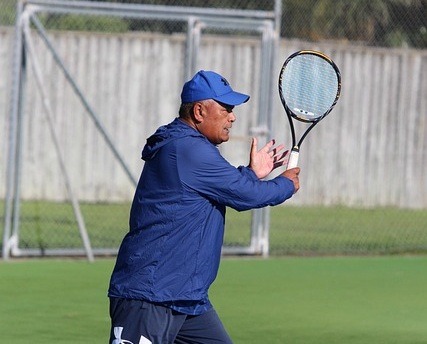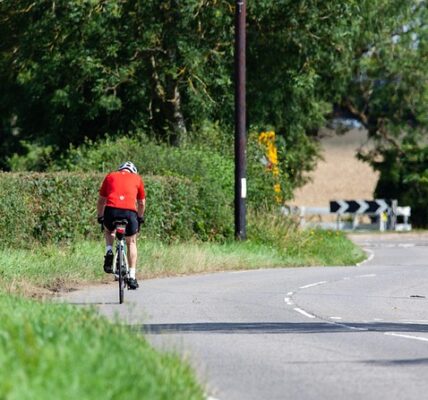The Second Serve: Why Starting to Play Tennis Over 50 is Your Best Move Yet. Let’s take a look, shall we?
There’s a moment that arrives for many men somewhere past their fiftieth birthday. It’s a quiet realisation that you need a new challenge, a fresh pursuit that engages both the body and the mind.
The well-trodden paths of golf or cycling are fine choices, but perhaps you’re looking for something with a bit more intensity, a bit more grit. You might find yourself watching Wimbledon in July, seeing the explosive energy on the court, and wondering, “Could I do that? Is it too late for me?”
Let’s be clear. The idea of starting to play tennis over 50 isn’t just a fleeting thought; it’s one of the best decisions you could make for your long-term health and happiness.
This isn’t about chasing a professional dream. It’s about discovering a demanding, strategic, and incredibly rewarding sport that can enrich your life for decades to come.
But like any worthwhile endeavour, it requires the right approach. Let’s explore if it’s right for you, how to get started safely, and what to do if you can’t immediately find a partner.
Is Playing Tennis Over 50 Really the Right Thing to Do?
The simple answer is a resounding yes, but with a few important conditions. The benefits on offer are immense. Physically, tennis is a comprehensive, full-body workout.
You’re not just swinging your arm; you are constantly moving, changing direction, and engaging your core, legs, and upper body. It’s a fantastic cardiovascular exercise that improves your stamina, agility, and reaction times.
Unlike repetitive motions in some sports, tennis demands dynamic movement, which helps maintain bone density and muscular strength, crucial factors for healthy ageing.
Beyond the purely physical, the mental workout is just as profound. Tennis has often been described as high-speed chess. You need to anticipate your opponent’s moves, plan your shots, and adjust your strategy on the fly.
This constant problem-solving keeps your mind sharp and focused. The simple act of concentrating on the ball and the court can be a powerful form of stress relief, providing a welcome escape from daily pressures.
Moreover, there’s a deep satisfaction that comes from mastering a new skill later in life, proving to yourself that growth and improvement have no age limit.
Of course, we must be realistic. Tennis is a high-impact sport. The quick stops, starts, and pivots can put stress on your joints, particularly your knees, hips, and ankles.
The repetitive swinging motion can lead to classic ailments like tennis elbow or rotator cuff issues in the shoulder if your technique is poor. This is the crucial caveat.
Charging onto a court without preparation is a recipe for injury, not enjoyment. But by approaching the game with respect and intelligence, you can mitigate these risks almost entirely. For men committed to a smart start, the immense upside of playing tennis over 50 makes it an undeniably positive life choice.
A Smart Approach to Getting on Court
So, you’re convinced. You’re ready to pick up a racquet. How do you go from the sofa to your first successful rally? The key is to be methodical. Your enthusiasm is your fuel, but a smart plan is your roadmap to success and, most importantly, avoiding injury.
First, before you even think about buying gear, have a conversation with your GP. A quick health check is a sensible precaution for any man over fifty starting a new, strenuous activity. Discuss your intentions, get a professional opinion on your physical readiness, and listen to any personalised advice they might offer.
Next comes the gear. Your most important investment will be your shoes. Do not wear running shoes. They are designed for forward motion and lack the lateral support needed for tennis, which will leave your ankles vulnerable. Go to a proper sports shop and ask for tennis-specific court shoes.
They will provide the stability and cushioning you need. As for the racquet, resist the urge to buy the latest, most powerful model used by the professionals.
These are often heavy and stiff, designed for players who generate their own power and have flawless technique. A beginner or intermediate racquet will be more forgiving, lighter, and easier on your arm. Ask for advice in the shop; a good assistant will help you find the right tool for the job.
Now, for the most critical step: learn the fundamentals from a professional. Find a local club and book a series of beginner lessons with a qualified coach.
This is non-negotiable.
A coach will teach you the correct form for your forehand, backhand, volley, and serve.
Proper technique is not about looking good; it’s the absolute foundation of injury prevention. It ensures you are using your whole body to generate power, not just your arm, which is how conditions like tennis elbow develop.
Group lessons are a fantastic, cost-effective option. You’ll learn the game in a low-pressure environment and meet other people at the same starting point.
Getting Started Without a Partner
A common hurdle for many aspiring players is the simple question, “Who will I play with?” It can be daunting if you don’t have a ready-made hitting partner. Fortunately, the world of tennis is perfectly set up for the solo starter.
Your first and best port of call is to join a local tennis club. A good club is more than just a collection of courts; it’s a community. Ask about their social tennis sessions, sometimes called club nights or mixers.
These are organised sessions where you just turn up and the club arranges doubles pairings for you.
It’s the single best way to meet other members and find people of a similar ability to play with. Many clubs also run beginner leagues or ladders, giving you a structured way to get competitive games.
Even without another person, you can still get a fantastic workout and improve your skills.
Seek out a practice wall or backboard. Hitting against a wall is an invaluable tool. It never misses, it returns the ball at the same pace you hit it, and it allows you to groove your strokes through repetition. You can work on your consistency, footwork, and timing for as long as you want, free from any pressure.
For a more dynamic solo session, find out if your club has a ball machine available for hire.
This is your perfect, tireless opponent. You can set the machine to deliver balls at different speeds, frequencies, and to different parts of the court. You can drill your backhand cross-court for twenty minutes straight if you want. It’s an incredibly efficient way to build muscle memory and turn your weaknesses into strengths.
Embracing these solo practice methods ensures that your progress never has to depend on someone else’s schedule, making your journey into playing tennis over 50 a truly personal one.
0



